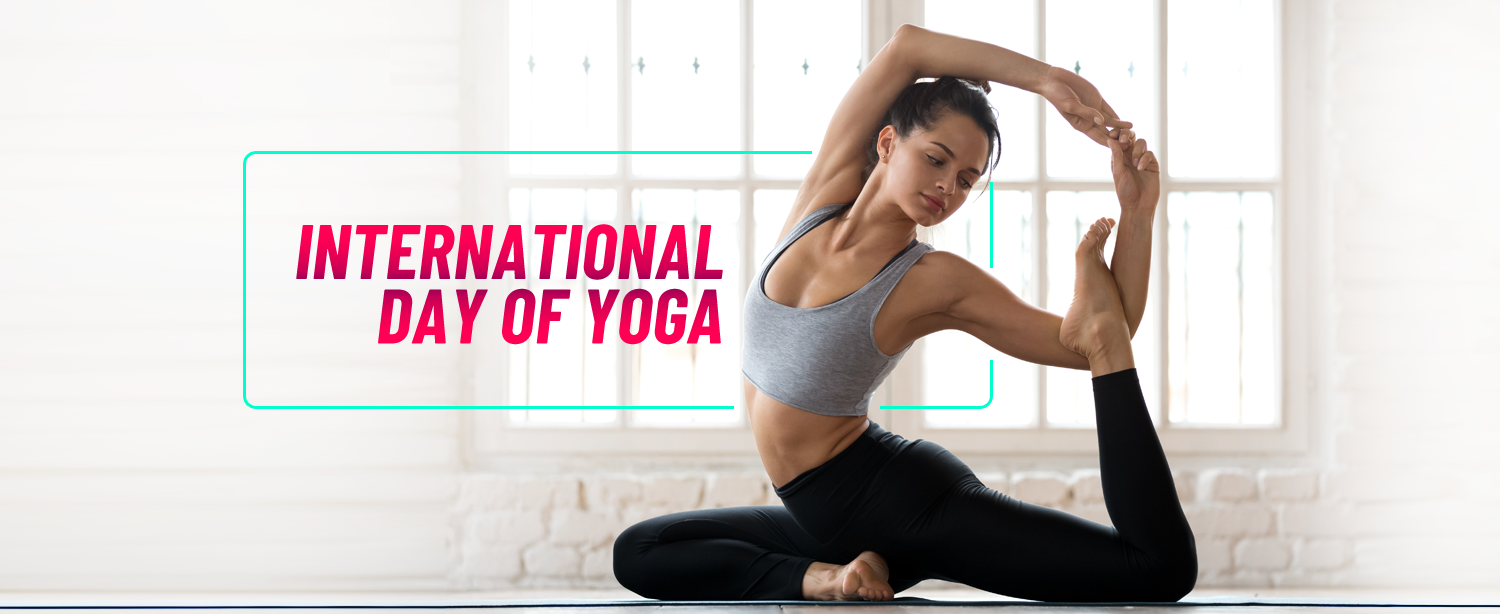Yoga is an ancient form of exercise that entails physical postures, meditation, and deep breathing. It is highly beneficial in its ability to increase mind-body awareness and promote physical movement. This form of exercise helps rejuvenate the mind and spirit, tones the body, and maintains the health of your internal organs and hormonal system. Yoga asanas are one of the few physical exercises you can continue doing as you age. Always remember when it comes to yoga slowly and steadily aim at perfecting your poses, focus on how you do yoga rather than how much you do.
Health Benefits of Yoga
People across age groups and from all walks of life benefit from various yoga poses. A consistent practice offers a plethora of mental and physical health benefits. Here are the top benefits of yoga:
- Improves flexibility
Stretching and moving your body in new ways will help you become more flexible, bringing a greater range of motion to tight muscles. Your hamstrings, back, shoulders, and hips should all get more flexible with time.
- Boosts cardiac health
Heart disease is the world’s top cause of death, and research suggests that daily yoga practice helps older persons with metabolic syndrome decrease cardiovascular risk factors such as obesity and high blood pressure.
- Improves sleep
Many people who practice yoga report that it helps them to sleep better and a large body of scientific evidence supports this claim. It helps fight insomnia and reduces incidents of troubled sleep.
- Eases back pain
Increased flexibility and strength can help prevent the causes of some types of back pain. As more and more people work and study from home and lead sedentary lifestyles lower back problems are becoming increasingly common.
- Builds strength
Many yoga postures, such as balancing on one leg or holding yourself with your arms, require you to carry your body weight in novel and often difficult ways. Holding these poses for multiple breaths aids in the development of muscular strength and endurance.
- Improves joint health
Yoga requires low-impact motions that allow you to use your joints without damaging them. Yoga also strengthens the muscles that surround the joints, reducing the load on them.
- Promotes better breathing
Different types of breathing exercises in yoga help focus your attention and take deeper and longer breaths that help improve your respiratory health.
- Boosts your mental health
Yoga is a combination of exercise, meditation, relaxation and helps reduce the symptoms of anxiety and depression. Yoga also teaches you how to meditate, focus on your breath and disengage from your thoughts helping your mind relax. This helps you cope better with stress.
Here is how yoga benefits people across gender and age:
Yoga for students
Practicing yoga is said to come with many benefits for both mental and physical health. Virtual learning has led to more and more students leading sedentary lifestyles that have caused increased incidents of stress, nervousness, indigestion, sleep disorders. Learning yoga at an early age helps students increase concentration levels, boosts their memory power, improves adaptability, and helps channelize their energies correctly. Here are 5 yoga exercises recommended for students:
- Matsyasana (Fish pose)
- Virasana (Hero pose)
- Suryanamaskar (Sun salutations)
- Bhramari pranayam (Bee breathing)
- Vajrasana (Diamond or thunderbolt pose)
Yoga for women
Women experience various reproductive health concerns namely menstruation, pregnancy, and menopause. Yoga helps deal with these different life changes smoothly.
- Menstruation – Several women experience some negative emotional, physical, or relational symptoms in the days prior to menses, with symptoms ranging from mild to severe. Mood changes, irritability, fatigue, bloating, and breast tenderness are common symptoms. Regular yoga practice helps alleviate discomfort associated with periods.
- Childbirth (pregnancy and postpartum) – Research suggests that prenatal yoga helps decrease the perception of pain during labor, reduces physical discomfort during pregnancy and childbirth and improves the overall quality of life. Prenatal yoga has been associated with reduced risk of postpartum depression.
- Menopause – The most common menopausal symptoms include hot flashes, night sweats, fatigue, pain, decreased libido, and mood swings, etc. Perimenopausal women often turn to yoga to reduce the unwanted side effects of menopausal symptoms. 5 poses yoga exercises recommended for women:
- Adho mukha svanasana (Downward facing Dog)
- Virabhadrasana I (Warrior I)
- Malasana (Garland pose)
- Utkata Konasana (Goddess Pose)
- Navasana (Boat pose)
Yoga for seniors
You are never too old to practice yoga and even get started with this form of exercise. For seniors who are looking for a safe, effective way to enhance their physical health and overall wellness, the stretching, breathing, and meditation practices of yoga are highly beneficial. Yoga helps strengthen your joints, improve balance and flexibility, lowers stress and promises better sleep. 5 poses yoga exercises recommended for seniors:
- Trikonasana (Triangle pose)
- Tadasana (Mountain pose)
- Vrikshasana (Tree pose)
- Bhujangasana (Cobra pose)
- Titli asana (Butterfly pose)
2021 International Day of Yoga focuses on the theme “Yoga for well-being”. As we struggle each day from the ups and downs of life and are still recovering from the impact of a pandemic physically and emotionally, yoga can be of immense help. Embrace yoga as a new way of life to stay healthy, fight various mental health challenges, and also help conquer fear and anxiety. Regular practice of yoga helps strengthen your body’s immune system that helps fight various infections.


